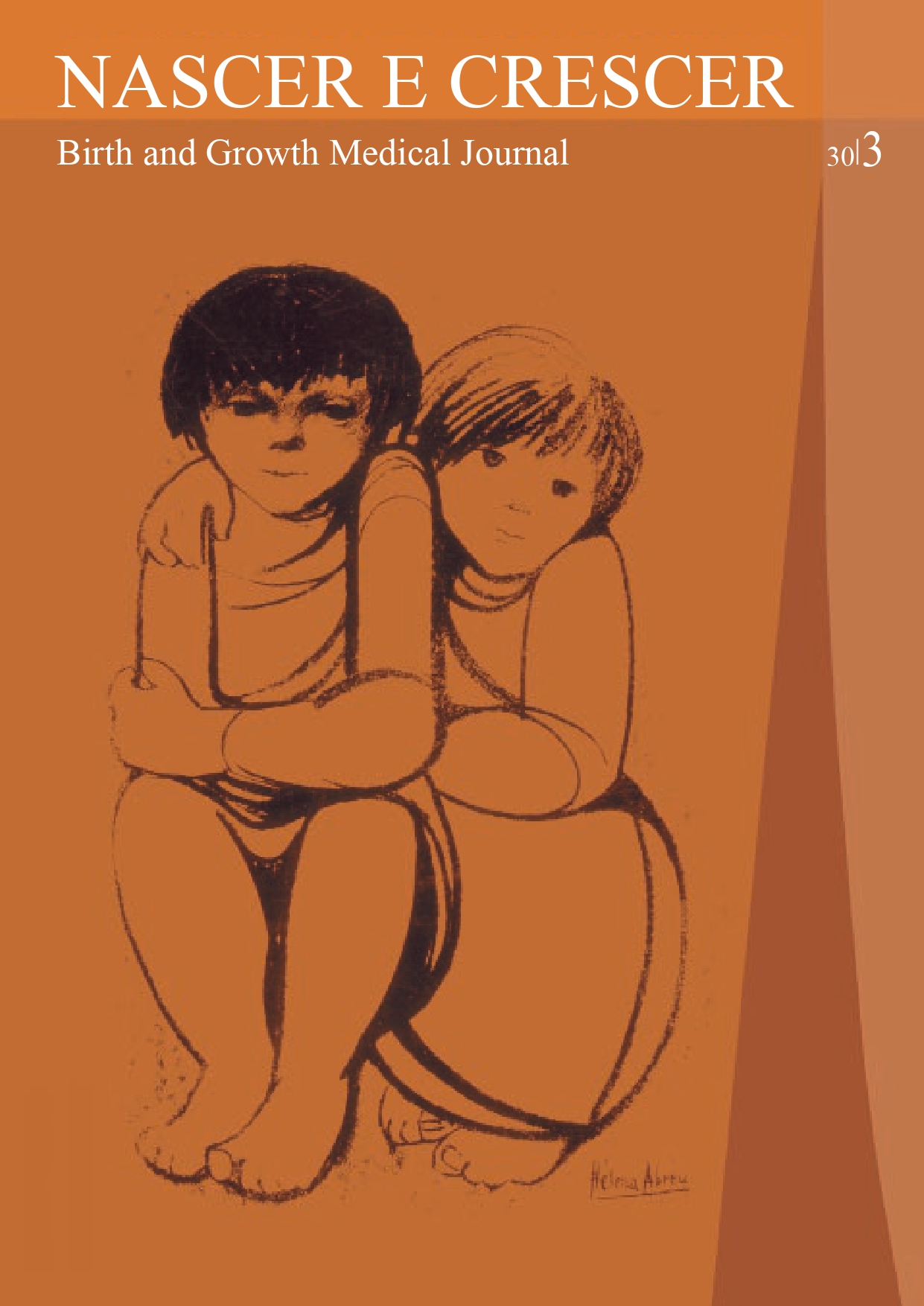Weight loss as a cause of superior mesenteric artery syndrome
DOI:
https://doi.org/10.25753/BirthGrowthMJ.v30.i3.18823Keywords:
superior mesenteric artery, Polycystic Ovary Syndrome, weight lossAbstract
Introduction and objective: Superior mesenteric artery syndrome (SMAS) is a rare condition in pediatric age, often presenting with non-specific gastrointestinal symptoms. The aim of this report was to highlight the importance of considering/excluding this diagnosis.
Case description: A 17-year-old female presented with slowly progressing epigastralgia, heartburn, early satiety, nausea and sporadic vomiting with one and a half years of evolution. She had lost 13% of her weight in the previous six months. On physical examination, the girl complained of pain on epigastrium palpation, with no further changes. Laboratory tests were normal. Esophageal, gastric and duodenal transit (EGDT) revealed a vertically elongated stomach, with the greater curvature projecting towards the pelvic cavity and a slight delay in gastric emptying. Abdominal computed tomography scan confirmed the diagnosis of SMAS and a conservative approach with a hypercaloric fractionated diet was initiated. The girl maintained multidisciplinary follow-up (Nutrition, Pediatrics and Pedopsychiatry), with marked improvement and without requiring surgical intervention.
Comments: Although rare, SMAS should be considered after exclusion of the most frequent underlying causes of persistent non-specific gastrointestinal symptoms.
Downloads
References
Scovell Sherry, Hamdan Allen. Superior mesenteric artery syndrome 2015 [accessed in March 2018]. Available at: https://www.uptodate.com/contents/superior-mesenteric-arterysyndrome?search=Superior%20mesenteric%20artery%20syndrome&source=search_result&selectedTitle=1~31&usage_type=default&display_rank=1.
Hermosillo-Cornejo D G, Girón-Gidi A D, Velez-Pérez FM, Lemus-Rmirez RI, Martinez-Garza PA. Síndrome de Wilkie. Reporte de un caso. Cirugía Y Cirujanos. 2017:85:54-9.
Felizes A, Pereira S, Lobo S, Gonçalves M. Síndrome da Artéria Mesentérica Superior Como causa de Dor Abdominal Recorrente: Caso clínico. Acta Pediatr Port 2016; 47:168-71.
Silva Elsa, Ribeiro C, Guerreiro S, Domíngues A. Síndrome de Wilkie – a propósito de um caso clínico. Revista Portuguesa de Cirurgia 2016; 37: 22-8.
Lee AM, Bai HX, Zou Y, Wang Z, Qiu D, Tang H, et al. Superior Mesenteric Artery Syndrome in a 20-year-old Athletic Female with Abdominal Pain. Chinese Medical Journal 2015; 128 (23):3260-1.
Rodriguez A, Vidomlansky SR, Ferrarotti C, Larrañaga N, Kozima JCG. Síndrome de la arteria mesentérica superior. Presentación de un caso. Rev Argent Radiol. 2014;78(2):96-98.
Kefeli A, Aktürk A, Yeniova A O, Başyiğit S. Conservative therapy for superior mesenteric artery syndrome. Turk J Gastroenterol 2016; 27: 85-6.
Eğritas Ödül, Demiroğullari B, Dalgıç B. Megabulbus in endoscopy; suspect for superior mesenteric artery syndrome in children. Turk J Gastroenterol 2015; 26: 186-8.
Naseem Z, Premaratne G, Hendahewa R. “Less is more”: Non operative management of short term superior mesenteric artery syndrome. Annals of Medicine and Surgery 2015; 4: 428-30.
Downloads
Published
How to Cite
Issue
Section
License
Copyright (c) 2021 Vânia Leitão Martins, António Cruz

This work is licensed under a Creative Commons Attribution-NonCommercial 4.0 International License.
Copyright and Authors' Rights
All articles published in Nascer e Crescer - Birth and Growth Medical Journal are Open Access and comply with the requirements of funding agencies or academic institutions. For use by third parties, Nascer e Crescer - Birth and Growth Medical Journal adheres to the terms of the Creative Commons License "Attribution - Non-Commercial Use (CC-BY-NC)".
It is the author's responsibility to obtain permission to reproduce figures, tables, etc. from other publications.
Authors must submit a Conflict of Interest statement and an Authorship Form with the submission of the article. An e-mail will be sent to the corresponding author confirming receipt of the manuscript.
Authors are permitted to make their articles available in repositories at their home institutions, provided that they always indicate where the articles were published and adhere to the terms of the Creative Commons license.


